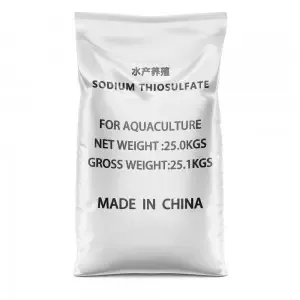



Safety Data Sheet for 6M Sodium Hydroxide Solutions and Handling Procedures
Understanding the Safety Data Sheet (SDS) for 6M Sodium Hydroxide
Introduction
Sodium hydroxide (NaOH), commonly known as lye or caustic soda, is a highly versatile chemical used across various industries, including food processing, chemical manufacturing, and water treatment. When concentrated to a 6M solution, its properties and potential hazards become particularly relevant for safety and handling. The Safety Data Sheet (SDS) is an essential resource for anyone working with hazardous materials, providing detailed information about the chemical's risks and safety measures.
Chemical Identification
Sodium hydroxide is a strong alkali, which means it readily dissociates in water to produce hydroxide ions (OH⁻), making it highly reactive and corrosive. The 6M solution indicates that it contains 6 moles of NaOH per liter of solution, a concentration that significantly enhances its reactive capacity. It is important to identify the chemical using its International Union of Pure and Applied Chemistry (IUPAC) name, synonyms, and chemical formula to avoid confusion with other compounds.
Hazards Identification
The hazards associated with 6M sodium hydroxide are critical to understand. The SDS indicates that it poses severe risks through inhalation, ingestion, and skin or eye contact. Common hazards include
- Corrosivity Sodium hydroxide can cause severe burns to skin and eyes, potentially leading to permanent damage. Protective gear, including gloves and goggles, should be worn at all times when handling this substance. - Reactivity Sodium hydroxide is highly reactive with acids, producing heat and potentially leading to splattering. It can also react with water, releasing heat and increasing the risk of burns or thermal injuries.
- Toxicity Inhalation of sodium hydroxide vapors can damage respiratory pathways and lead to severe complications.
First-Aid Measures
Understanding first-aid measures for sodium hydroxide exposure is crucial for ensuring safety in the workplace. According to the SDS
- Inhalation Move the affected individual to fresh air immediately. If breathing is difficult or has stopped, provide artificial respiration and seek medical attention promptly.
6m sodium hydroxide sds

- Skin Contact Remove contaminated clothing and rinse the affected area with copious amounts of water for at least 15 minutes. If irritation persists, seek medical attention.
- Eye Contact Rinse the eyes immediately with water or an saline solution for at least 15 minutes while holding the eyelids apart. Seek medical assistance urgently.
- Ingestion Do not induce vomiting. Rinse the mouth thoroughly and seek immediate medical attention.
Handling and Storage
When working with 6M sodium hydroxide, it is essential to follow proper handling and storage protocols to minimize risks. The SDS provides guidelines such as
- Personal Protective Equipment (PPE) Always wear appropriate PPE, including gloves, eye protection, and lab coats to protect against splashes.
- Ventilation Ensure adequate ventilation to minimize inhalation risks. Fume hoods are recommended in laboratory settings.
- Storage Store sodium hydroxide in a cool, dry place in its original container, tightly sealed to prevent moisture absorption and maintain its integrity.
Disposal Considerations
Disposing of sodium hydroxide must be done in accordance with local regulations. The SDS typically recommends neutralizing with an acid, carefully following appropriate procedures, and ensuring it does not enter sewage systems or water bodies.
Conclusion
Working with 6M sodium hydroxide requires a thorough understanding of the chemical's properties, hazards, and safety measures outlined in its SDS. By adhering to safety protocols, using proper PPE, and implementing effective first-aid strategies, anyone handling this hazardous material can minimize risks and ensure a safer working environment. Remember, safety should always be the top priority when dealing with corrosive substances like sodium hydroxide.
-
Why Sodium Persulfate Is Everywhere NowNewsJul.07,2025
-
Why Polyacrylamide Is in High DemandNewsJul.07,2025
-
Understanding Paint Chemicals and Their ApplicationsNewsJul.07,2025
-
Smart Use Of Mining ChemicalsNewsJul.07,2025
-
Practical Uses of Potassium MonopersulfateNewsJul.07,2025
-
Agrochemicals In Real FarmingNewsJul.07,2025
-
Sodium Chlorite Hot UsesNewsJul.01,2025










